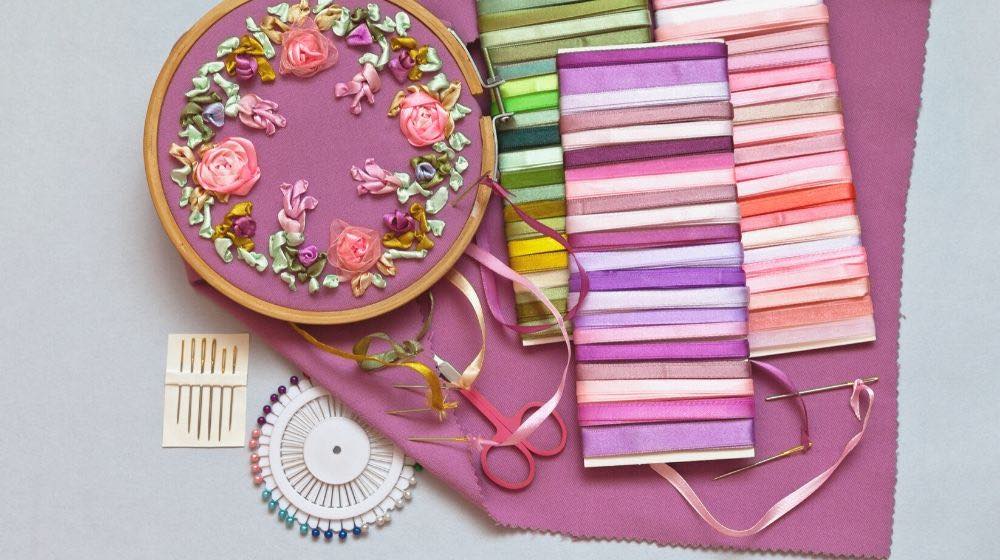Using the right embroidery needle can transform your projects from good to outstanding. Here's everything you need to know about these needles.
RELATED: 17 Hand Embroidery Stitches Every Sewer Should Know [INFOGRAPHIC]
Hand Embroidery Needle | What You Need to Know
1. Embroidery Needles or Sharps
|
Embroidery needles, compared to traditional sewing needles, have larger eyes and sharp tips. This is for the eye to easily thread through embroidery fabrics.
The sharp tips enable the needle to penetrate thick fabrics such as felt and also tightly woven embroidery fabrics. These are commonly referred to as crewel needles. Use these needles for common embroidery projects and crewel embroidery. You can get these at Amazon for $3-6.
2. Ribbon Embroidery Needles

You can identify a ribbon embroidery needles by its larger eyes to accommodate varying ribbon widths. It also varies by size and style. These needles typically work on almost any fabric but having these needles around will definitely come in handy.
3. Tapestry Needles
Tapestry needles also called ball-pointed needles, are a bit different compared to their contemporaries. Use these needles when you need to slip in between threads. These specialty needles come with dull points and are used when the needle needs to slip in between threads in the fabric.
These needles also have bigger eyes than embroidery and sewing needles. Use these ball-point needles when you are doing drawn work and pulled thread techniques, crochet projects, and counted cross stitch on Aida fabric or evenweave fabric.
4. Chenille Needles
|
Chenille needles are often compared to embroidery needles because both needles have sharp points and large eyes. These needles only differ from its counterpart in terms of shorter length and wider width.
It is best to use these needles for woolwork and crewel embroidery projects.
RELATED: Embroidery 101 | Easy Hand Embroidery Tutorial For Beginners
5. Milliner's Needles
|
These needles are used by milliners, generally known as hat makers. A Milliner's needles have round eyes with a long and sharp shaft. Use these needles for pleating, ribbon embroidery, or those that require heavy threads like size 5 pearl cotton.
6. Huck Embroidery Needles
|
As the name implies, these variants are designed for huck embroidery. These needles are longer than the typical ones and also has an angled and ball-pointed tip.
This enables the needle to effortlessly pass through and pick up the floating threads in huck toweling.
7. Gold Plated Needles
|
Use these needles if you suffer from nickel allergies. On the downside, these needle gets discolored quickly because of natural body oils or sweaty palms.
Just note that gold plated needles must be replaced when the plating wears off. What's more, the other needles listed in this post also have gold plated versions so you might want to look for this alternative if you need to.
8. Darning Needles
|
Darning needles are longer compared to their contemporaries. These needles also have a smaller eye. You can use these needles for running stitch, darning, and huck embroidery.
Check out this video by HandiWorks that shows how each needle works:
You can now gather one of each specialty items so you'll be well-equipped when doing projects. Use embroidery needles for certain fabric types. This way, the quality of your work won't be compromised. Hence, it is best to have one of these specialty needles around to maximize your output.
Which needle do you find most convenient to use? Share your thoughts in the comments section below!
UP NEXT: